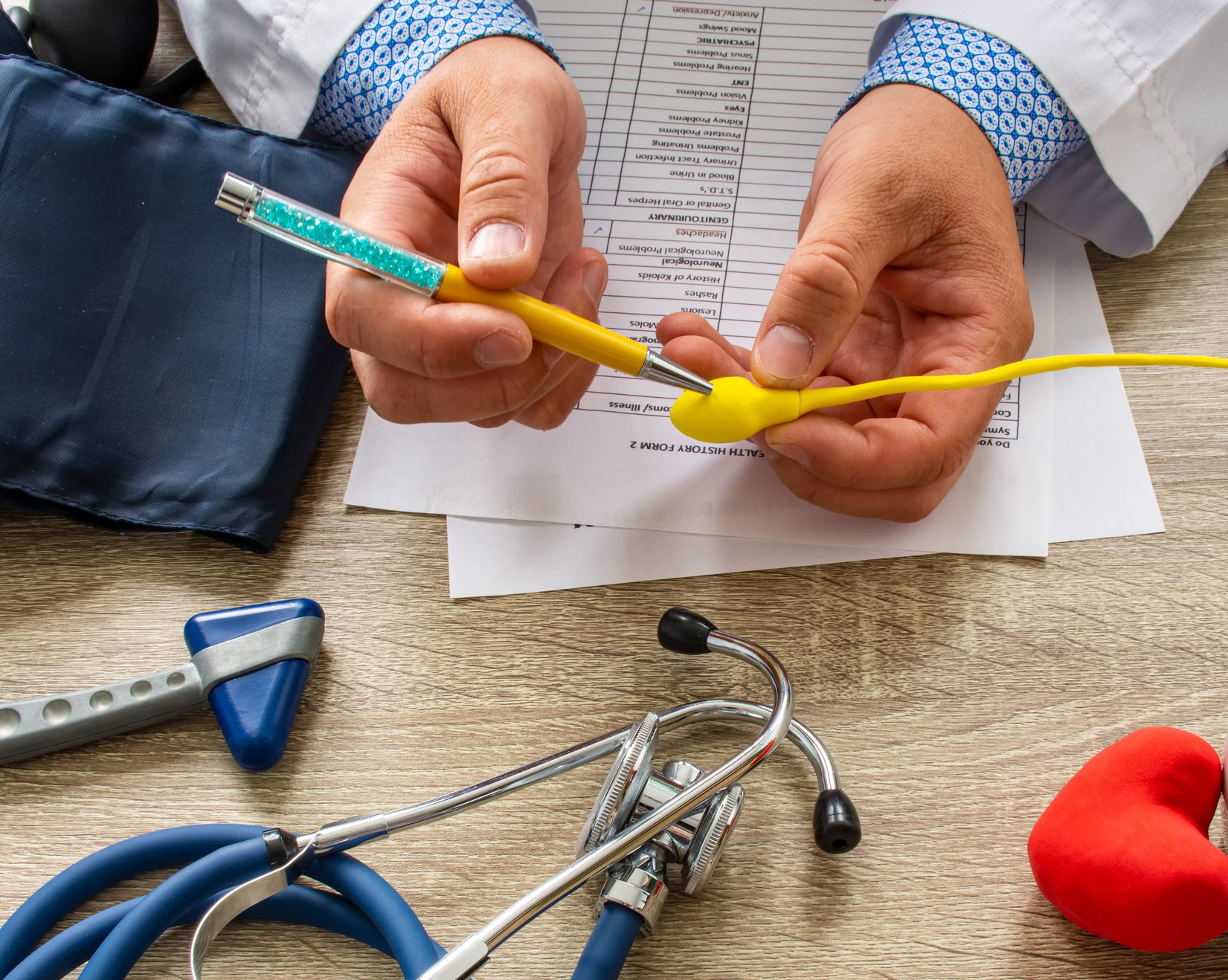-
How Vasectomy Reversal Procedures are Performed

Vasectomies are a common procedure for couples who have completed their families, in part because they’re a simpler procedure than a tubal ligation. Sometimes, however, men change their minds after they’ve had a vasectomy. It could be that the couple decides they want another child, or gets a divorce, but whatever the reason, it’s now possible for men to have their vasectomies successfully reversed. Vasectomy reversal, however, is a more complicated process.
The most common procedure to reverse a vasectomy is the vasovasostomy. This is a surgical reconnection of the vas deferens, the tube that carries sperm away from the testes. Generally, there’s a vas deferens on each side of the body, about the diameter of a strand of spaghetti, and these tubes are divided when a vasectomy is performed. Sperm production doesn’t stop after a vasectomy, but the sperm are no longer able to leave the body. A vasovasostomy allows ejaculation to occur again.
To perform a vasovasostomy, the surgeon makes a small incision in the scrotum. The vas deferens is isolated and dissected microscopically, divided above and below the obstruction caused by the vasectomy. The fluid from the testicle side is examined, and if it contains sperm, the surgeon reconnects the two ends of the vas deferens. This is done using multiple layers of micro suture and a powerful surgical microscope that magnifies the vas deferens to about 40 times its size. Once the vas is placed back into the normal position, a small drain is inserted in each side and the incision is closed with absorbable suture. The drains are removed the next day.
If there’s no sperm present in the fluid, the issue could be scar tissue that’s blocking the flow of sperm. If that’s the case, the surgeon may have to perform a more complicated procedure, called a vasoepididymostomy. There’s no way to know before surgery which procedure will be needed, so it’s important to find a surgeon capable of performing both. A vasoepididymostomy involves connecting the vas deferens to the epididymis. The longer it’s been since the vasectomy, the higher the possibility that a vasoepididymostomy will need to be performed.
The chances of a vasectomy reversal being successful are fairly high. If the vasectomy happened less than five years ago, there’s a greater than 95 percent chance that the ejaculate will contain sperm. Between five and ten years, it drops to about 90 percent, but even after ten years, the success rate is still between 80 and 90 percent. The chances of a successful pregnancy depend on several different factors, but with the help of a competent surgeon, many fertility issues can be overcome.
At the Center for Vasectomy Reversal, we pride ourselves on providing optimal surgical results and uncompromising, concierge-level patient care. Under the direction of Dr. Joshua Green, our team provides state-of-the-art treatment for men who need a reversal of their vasectomy or have other fertility concerns. To learn more, contact us through our website or call 941-894-6428 for a free consultation.
-
Everything You Need to Know About Vasoepididymostomy

Vasoepididymostomy is a corrective treatment for epididymal obstruction, or blockage near the testicular end of the vas deferens. The procedure surgically connects the vas deferens to the epididymis. A successful outcome relies on the microsurgical skills and extensive experience of the physician performing the procedure.
What is the Epididymis?
The epididymis is a tightly coiled tube situated behind the testis. Sperm leave the testicle and enter this tube, where they learn to “swim,” a skill necessary to fertilize a female’s egg. The epididymis is only 200 microns wide, or twice the diameter of a human hair, so operating on it requires incredible precision. From here, sperm empty into the vas deferens, which takes them to the ejaculation ducts. Sperm then pass into the urethra in the penis prior to ejaculation.
What Causes Epididymal Obstruction?
Several underlying problems could cause a blockage in the epididymis, including:
- Congenital abnormalities, such as the absence of the distal portion of the epididymis and absence of the vas deferens
- Inflammation of the epididymis (epididymitis)
- Young’s syndrome
- Accidental injury from a prior surgery
- Side effect of a past vasectomy, especially if the procedure was performed over 10 years ago
What are the Advantages of Vasoepididymostomy Over IVF/ICSI?
In vitro fertilization (IVF) and intracytoplasmic sperm injection (ICSI) are two relatively recent advances in reproductive medicine. IVF is the process of extracting eggs from a woman and sperm from a man, and then combining them manually in a laboratory dish. The resulting embryo is then transferred to the woman’s uterus. ICSI is a type of IVF that involves injecting a single sperm cell into an egg.
Here’s why treating epididymal obstruction with vasoepididymostomy could be preferred over IVF/ICSI:
- If the treatment is successful, couples can have children through natural intercourse.
- IVF is an expensive, intense procedure, especially for the female partner.
- There are no ethical issues surrounding
- Pregnancy rates (11 to 56 percent) are comparable with or better than IVF/ICSI.
- Insurance often covers the cost to correct epididymal obstruction but may not cover IVF/ICSI.
- Sperm can be collected during the procedure and cryopreserved for future IVF attempts if vasoepididymostomy is not successful.
Could Vasoepididymostomy be Right for Me?
Your doctor may recommend this procedure if you have the following:
- Male infertility
- Active sperm production in the testis
- Signs of an obstructed epididymis, including thick fluid expressed from the testicular side of the vas deferens following a vasectomy
Dr. Joshua Green of the Center for Vasectomy Reversal is a leader in male infertility microsurgeries, including vasoepididymostomy. Whether you’re simply struggling with male infertility or you want to reverse a prior vasectomy so you can have children, we can help. If you require vasoepididymostomy alongside a vasectomy reversal, we can perform this additional procedure at the same time for no extra cost. To learn more, please call our Sarasota, FL clinic at 941-894-6428 or schedule a free consultation online.
-
Comparing V-V and V-E Procedures

If you are having a vasectomy reversal, there are two approaches your surgeon will recommend: V-V or V-E. The one that is right for you depends on the scarring left behind after your vasectomy and whether the fluid from the testicular side of the vas deferens has a pasty consistency. Here is a closer look at how these procedures compare.
V-V is short for vaso-vasectomy. This is the most common form of vasectomy reversal surgery and involves reconnecting the ends of the vas deferens, which was cut during the original vasectomy procedure. This procedure can be performed as long as there is sperm present in the fluid from the testicular side of the vas deferens and the fluid looks clear and flows freely. If there is no sperm present or the fluid is thick and pasty, then a vasoepididymostomy, or V-E procedure, will be performed. During a V-E surgery, the vas deferens is attached to the epididymis.
Dr. Green at the Center for Vasectomy Reversal will help you understand each procedure and explain which one is most likely to work for you. To schedule an appointment for a vasectomy reversal in Sarasota, call (941) 894-6428.
-
Are You a Candidate for a V-E Procedure?

During your consult, your vasectomy reversal surgeon will explain your surgical options. Depending on your unique situation, you may be a candidate for a vasoepididymostomy, also called the V-E procedure. If so, the surgeon will attach the vas deferens directly to the epididymis, which is the small organ at the rear of each testicle that stores the sperm. The V-E technique is far more technically complicated than the standard vasovasostomy. However, you may require the V-E approach if you aren’t a good candidate for a vasovasostomy.
It’s typical for the vasectomy reversal surgeon to determine which technique is right for you during the surgery itself. The determining factor is whether there is sperm present in the fluid in the vas deferens. It’s not common to require the V-E procedure when a man has the reversal performed within 10 years of having the original vasectomy procedure.
At the Center for Vasectomy Reversal, Dr. Joshua Green will answer all of your questions about the surgery before you make your decision. Call (941) 894-6428 to request a consultation for having a vasectomy reversal in Sarasota.
-
Questions to Ask Your Surgeon About Your Vasectomy Reversal Procedure

The decision to have any sort of surgery should never be made lightly. It’s important to be a proactive patient by asking the vasectomy reversal surgeon all of your questions and learning about the procedure from credible sources. Don’t hesitate to call the clinic if any questions or concerns occur to you after your initial consultation.
How long does the procedure take?
A vasectomy reversal is an outpatient procedure, which means you won’t have to stay at the hospital overnight. It typically takes two to three hours to perform it. If the doctor needs to perform a vasoepididymostomy, which is a more complicated surgical technique, then it will take a little longer. The doctor probably won’t know whether this technique is needed until during the surgery itself. Additionally, it will take some time to prepare you for surgery and to monitor you afterward.
Will I be asleep?
Yes, this procedure is performed under general anesthesia. If you’ve ever had general anesthesia before and experienced a reaction to it, let the doctor know. You’ll be asked not to consume any food or liquids for eight to 12 hours prior to your appointment. Your vital signs will be continuously monitored during the surgery, and while you’re coming out of the anesthesia afterward. It’s normal to be groggy for a while afterward. You should plan to rest after you return home.
Will it be painful afterward?
Most patients report that the pain isn’t as bad as they expected. You would probably describe it as discomfort or an aching sensation, similar to what you experienced after your original vasectomy. The doctor will prescribe pain medications. Follow the dosage instructions on the label carefully, and call the pharmacist if you have any questions. You should also apply an ice pack for 20 minutes off and on to minimize the discomfort and swelling.
You can get the answers to all of your questions during your consultation with Dr. Joshua Green. Here at the Center for Vasectomy Reversal, we emphasize the importance of patient education and pre-operative preparedness. You can call our vasectomy reversal clinic in Sarasota at (941) 894-6428.
-
The Patient’s Guide to Vasoepididymostomy

Having a vasectomy does not necessarily mean that you’ll never be able to father children. In fact, advanced surgical technologies have facilitated great outcomes for men seeking vasectomy reversal, which may become appropriate as your life plans and goals change. If you are considering vasectomy reversal in Sarasota, your first step will be to consult a surgeon to explore your options. There are a few different procedures available, including vasoepididymostomy, which is discussed in further detail here:
What is the procedure?
Vasoepididymostomy is a more complex and technically demanding surgical procedure than vasovasostomy, which you might consider a standard vasectomy reversal procedure. During the vasoepididymostomy, the surgeon must work around an epidydimal obstruction, which is not the case in vasovasostomy surgeries.
Who should consider it?
Your doctor will utilize a series of diagnostic tests to understand your unique needs in vasectomy reversal. If your vasectomy took place more than 10 years ago or there were any complications or trauma during your surgery, vasoepididymostomy may be indicated.
What can you expect during treatment?
Like other vasectomy reversals, vasoepididymostomy is a microsurgical procedure, so it will utilize very small incisions and be performed on an outpatient basis. You will be sedated during surgery, so you will not feel anything during the treatment itself. Afterwards, you may have some tenderness and soreness, and you will need to refrain from sexual activity and strenuous exercise until your surgeon gives you the go-ahead.
What type of outcome can you expect?
It’s important to understand the costs and potential for successful pregnancy following vasoepididymostomy. Though this procedure does not have success rates as high as vasovasostomy in terms of future pregnancies, it is still a more effective path to conception than IVF for many couples. In addition, it has lower costs per live birth than the in-vitro fertilization procedure.
At the Center for Vasectomy Reversal , you can expect personalized, compassionate care to restore your fertility. To schedule an appointment with our surgeon, Dr. Joshua Green, call (941) 894-6428.
Recent Posts
Popular Posts
categories
- Uncategorized
- Sperm Retrieval
- vasectomy reversal
- Emergency
- Dr. Green
- sperm count
- fertility
- male infertility
- MESA
- medical care
- low sperm count
- IVF
- male fertility testing
- anesthesia
- pregnancy
- sperm aspiration
- semen analysis
- post-vasectomy pain syndrome
- infertility
- VE
- anti-sperm antibodies
- older dad
- general anesthesia
- gender reveal party
- post-operative infections
- baby name
- parent
- baby's first year
- fertilization process
- spinal anesthesia
- ACS Fellow
- nutrition tips
- concierge-level care
- fertility planning app
- azoospermia
- out-of-town patients
- V-V
- post-vasectomy reversal
- conceiving
- vasectomy
- vasoepididymostomy
- smoking
- sperm quality
- baby registry
- infographic
- surgical care
- surgical consultation process
- prostate cancer
- baby gender
- family time
- COVID
- Baby Shower
- Child Care
- Halloween Costume Ideas for Babies
- Halloween
- Halloween Safety Tips
- Celebrity Infertility Spotlight
- Postpartum
- testosterone
- Father's Day
- Father
- Men's Health
- Thanksgiving
- Pregnancy Announcement
- Parenting Tips
- Sperm
